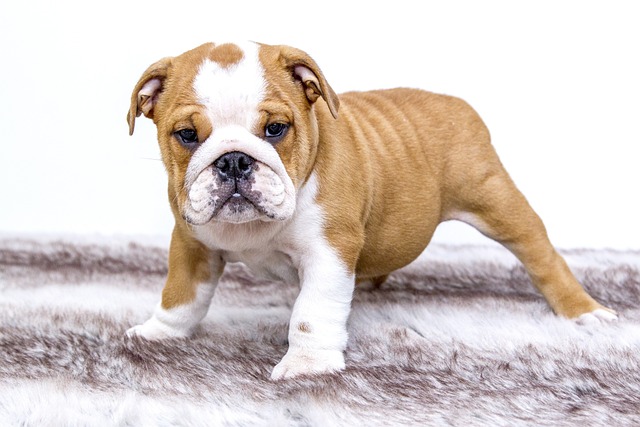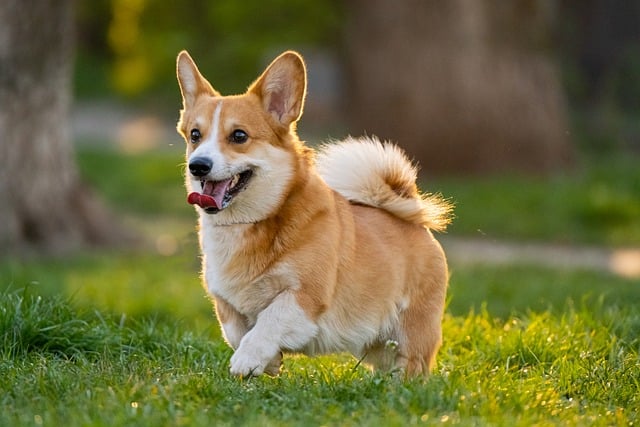
How to potty train an old dog?
Potty training an old dog takes patience more than speed—unlike puppies, adult pups have established habits, so rushing can make them anxious.
When we see other people's dogs obediently extending their paws to shake hands with their owners, their cute and lively appearance always makes us filled with envy. In fact, teaching our own dogs to shake hands is not a difficult task. Behind this small skill lies scientific training methods and warm emotional communication. Dogs are innately full of dependence and trust in their owners. As long as we master the correct way and guide them with patience and love, we can achieve a tacit understanding in the palm of our hands with our dogs during each interaction, and harvest the joy and warmth exclusive to each other.
From the perspective of animal behavior science, a dog's learning is based on the principles of conditioned reflex and positive reinforcement. A conditioned reflex means that a dog establishes a connection between a specific stimulus and a behavior through repeated training; positive reinforcement is to encourage the dog to repeat the correct behavior by giving rewards. Dogs long for their owners' recognition and attention. After they perform a behavior that meets the requirements, timely rewards and praise can make them associate this behavior with a pleasant experience, making them more willing to cooperate with the training. Handshake training makes use of these principles to let the dog understand the connection between the command and the action and gradually master this skill.
Before starting the handshake training, the owner needs to make full preparations. First of all, choose a quiet, comfortable and undisturbed environment, which can allow the dog to concentrate and be more engaged in the training. A noisy environment is likely to distract the dog, making it unable to focus on the owner's commands. Secondly, prepare the dog's favorite snacks as rewards, such as dried chicken and cheese cubes. The choice of snacks is very important. They should be of moderate size, easy to chew, and be the food that the dog particularly likes usually, so as to stimulate its enthusiasm to the greatest extent. In addition, the owner should also adjust their own mentality and maintain patience and gentleness. Dogs are very sensitive to their owners' emotional changes. If the owner shows impatience or irritability during the training, it will make the dog feel nervous and uneasy, affecting the training effect.
In the initial stage of training, the owner can first let the dog get familiar with the command of "shake hands". Let the dog sit down, squat down to look it in the eye, and ensure that its attention is focused on the owner. Then, clearly say the command "shake hands", and at the same time, gently lift one of the dog's front paws, hold it and keep it for 1 - 2 seconds, and then immediately give a snack reward and enthusiastic praise, such as "Great job", while gently stroking its head. This process should be repeated several times, and each training session should be controlled within 5 - 10 minutes to avoid making the dog bored. At this stage, the dog may not fully understand the meaning of the command, but through continuous repetition, it will gradually associate the sound of "shake hands", the owner's action, and the pleasant experience of getting a reward.

As the training progresses, when the dog has a preliminary impression of the "shake hands" command, the owner can try not to lift its paw actively anymore. Instead, after saying the "shake hands" command, pause for a while and observe the dog's reaction. Some smart dogs may actively lift their paws. Once this behavior occurs, the owner should immediately seize the opportunity, hold its paw, and give a snack reward and praise. If the dog doesn't respond, the owner can gently lift its paw again, repeat the previous training steps, and guide it to make the correct action. During this process, the owner should maintain sufficient patience and not be anxious or blame the dog just because it can't understand for a while. Each dog has different learning abilities and speeds. As long as they are given enough time and guidance, they can all learn this skill.
When the dog can more steadily extend its paw actively after hearing the "shake hands" command, the owner can start to increase the difficulty and fun of the training. For example, extend the time of shaking hands, gradually increasing from the initial 1 - 2 seconds to 3 - 5 seconds, or even longer; conduct training in different environments, such as the living room, garden, park, etc., to enhance the dog's adaptability to the command and make it obey the command no matter where it is. You can also try to play interactive games with the dog. For example, the owner extends his hand and says "shake hands". After the dog shakes hands, the owner throws a snack for it to chase, increasing the fun of the training and allowing the dog to consolidate the skill while having fun.
During the training process, the owner should pay attention to some details. First of all, each training session should not be too long to avoid making the dog tired and bored. The training can be divided into several small stages, with appropriate breaks between each stage to let the dog relax. Secondly, maintain consistency in commands and actions. The tone and intonation of the "shake hands" command should be as consistent as possible each time, and the actions should also be standardized, which helps the dog accurately understand the command. If the owner's commands and actions often change, it will make the dog confused and affect the training effect. In addition, when the dog makes mistakes or doesn't cooperate, don't punish it. Instead, calmly analyze the reasons and adjust the training method. It may be that the dog is not concentrating, or the training difficulty is too high. The owner should make adjustments according to the actual situation.
The process of teaching a dog to shake hands is not only about teaching it a skill but also a journey of warming up the relationship between the owner and the dog. Every patient guidance and every gentle encouragement are deepening the trust and tacit understanding between each other. One day, when we gently say the "shake hands" command, the dog will unhesitatingly extend its paw and hold ours tightly. The joy and emotion at that moment are beyond words. This tacit understanding in the palm of our hands is a flower watered with our love and patience. It will become the most precious memory between us and our dogs, accompanying us through every wonderful day.

Potty training an old dog takes patience more than speed—unlike puppies, adult pups have established habits, so rushing can make them anxious.

Professional dog trainers typically reach for treats that are small, soft, and incredibly high-value—the canine equivalent of gourmet chocolate.

At first glance, training treats and regular treats might seem interchangeable, but they’re designed for entirely different purposes. Training treats are typically tiny

I leaned against my friend Mia’s New York City apartment counter last Tuesday, watching her rush around grabbing keys—shoulders hunched, jaw tight

Dogs don’t just hear your words; they’re masters at reading your entire physical presence. Thanks to thousands of years of domestication

Many dogs freeze up or bark excessively when they see other pups at the neighborhood park, and this isn’t just shyness—it’s often social anxiety.